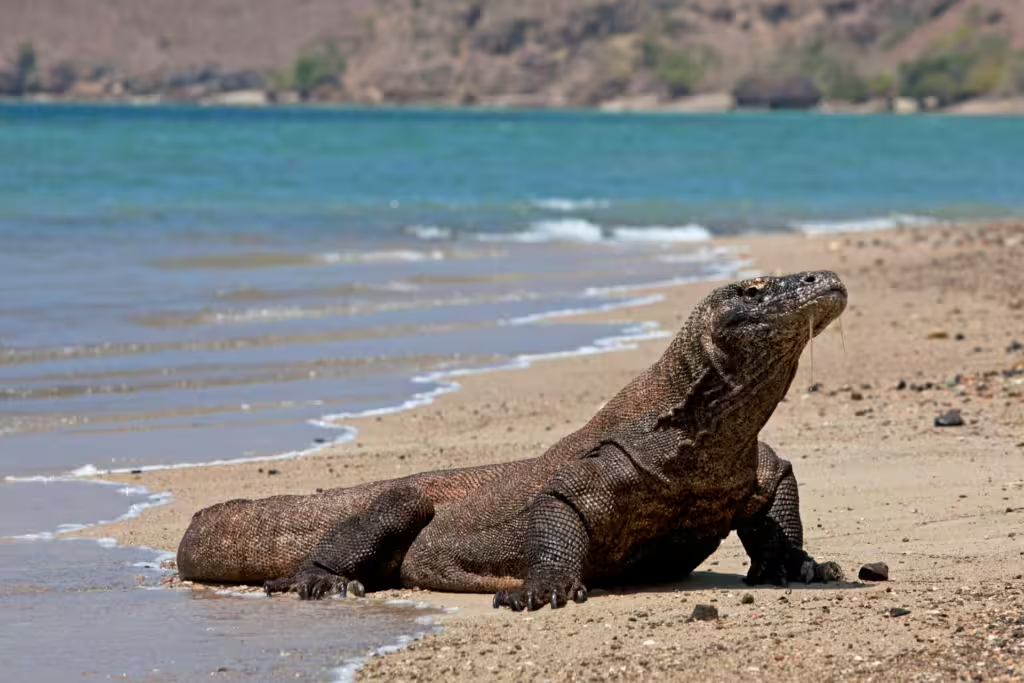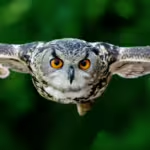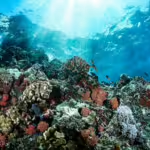Though some people might find them icky, creepy, or cold, there’s no denying that a large portion of the population is absolutely fascinated with reptiles. There is something primordial about them, something that harkens back to a dark and dangerous time, perhaps in the age before man first arrived on the scene. The reptile family contains a vast array of species ranging from tiny geckos to towering serpents; and it is this latter category that we are most interested in today.
Giant reptiles rank among the most awe-inspiring and fear-inspiring animals on the planet. For millennia, these draconic creatures have captured the imaginations of people all over the world. Memories of their voracity and ferocity dwell deep in our primitive, collective unconscious, inspiring mythology and folklore in cultures worldwide.
From actual Komodo dragons to the massive saltwater crocodiles that once captivated the attentions of herpetological icon Steve Irwin, these reptiles are not just large in size but possessed of remarkable adaptations. In this article, we will take a deep dive into the lives and adaptations of several of the world’s largest reptile species. Along the way, we will examine unique traits that set them apart, the threats they face, and the conservation efforts that are required to ensure their continued survival in an increasingly human-dominated world.
Komodo Dragons: The World’s Largest Lizard
We could not have a list like this without starting with the legendary Komodo dragon (Varanus komodoensis). This truly iconic giant reptile is best known for its sheer size and predatory prowess, but there are many evolutionary traits of the Komodo dragon that set it even further apart from its smaller monitor lizard cousins. The eponymous dragon is native to the islands of Komodo, Rinca, Flores, and Gili Motang in Indonesia. It can grow up to 10 feet in length and weigh over 150 pounds, which if you haven’t seen one of these in a zoo or a museum, if actually larger than you imagine in your head. As one might expect, Komodo dragons are carnivores and they typically prey on a variety of animals, including deer, wild boar, and, when needs must, even smaller Komodo dragons.
One of the most intriguing aspects of Komodo dragons, beyond their sheer size and power, is their venomous bite. You might be asking yourself, “why would a giant reptile need venom?” The answer is actually just as intriguing as the actual venom itself. For a time, many believed that the dragon’s bite was deadly due to the bacteria in their mouths, but recent studies suggest that the venom produced by their salivary glands plays a significant role in their ability to subdue larger prey. The Komodo dragon’s venom contains toxins that lower blood pressure and prevent clotting. This means that the damaged prey animal is almost sure to bleed out as a result of even one, nasty bite, eventually succumbing to the attack and allowing the dragon to then eat at its leisure.
Komodo dragons are highly territorial and display some degree of social hierarchy, despite the fact that they are generally solitary creatures. Despite their fearsome reputation and the dangers they pose to mainly other animals, Komodo dragons are vulnerable to extinction due to habitat loss, poaching, and climate change. Fortunately, conservation efforts are currently underway to protect the dragons’ natural habitats and establish protected areas for them to thrive.
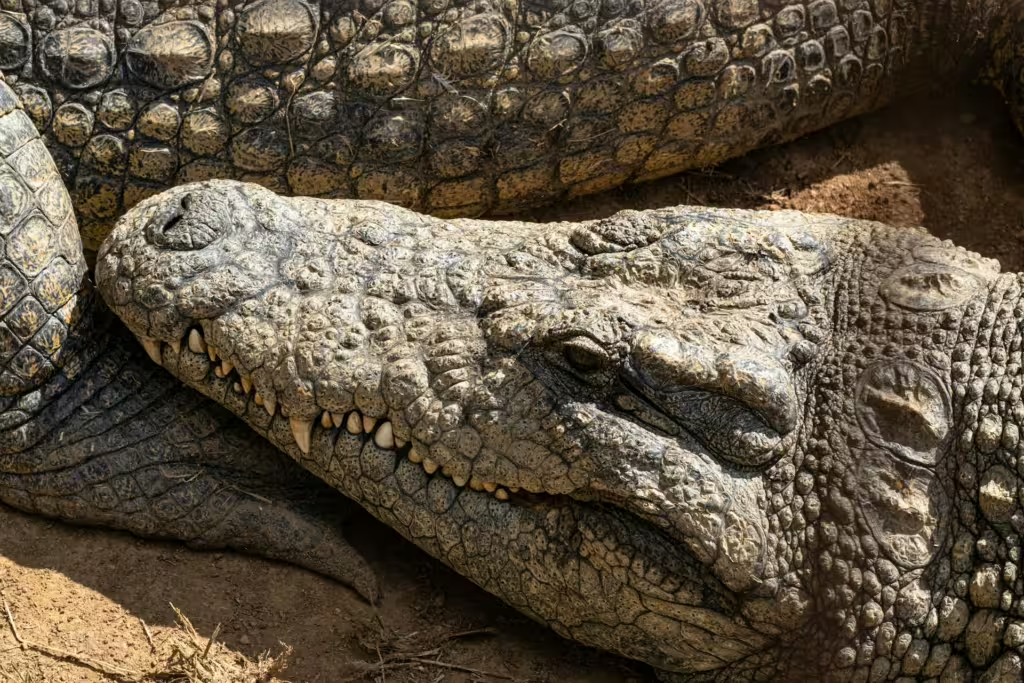
Saltwater Crocodiles: The Ultimate Predator
It lurks in the water, barely visible below the surface, but the slight displacement and the occasional bubbles are a clue to its existence. If you are ever unlucky enough to face a saltwater crocodile (Crocodylus porosus), we hope that you live to tale. These immense, aquatic reptiles are yet another prime example of nature’s most fearsome apex predators. Saltwater crocs are the largest living reptiles, with males reaching lengths of up to 23 feet and weighing over 2,000 pounds. They can be found across the Indo-Pacific region, from Southeast Asia to northern Australia. Highly adaptable, these reptiles can live in both saltwater and freshwater habitats.
Known for their stealth and powerful jaws, saltwater crocs are opportunistic hunters. This means that they aren’t picky about what they eat. Their wide range of prey includes everything from fish and birds, to large mammals and other reptiles. We touched on their hunting technique earlier, but it usually involves the croc lying in wait in the water, silently watching for unsuspecting prey to approach. When the time is right, they strike out with incredible speed and force, delivering a bite that has the strongest recorded bite force of any animal on the planet.
Saltwater crocodiles face threats from human activity like any other animal, however. Habitat destruction, poaching for their valuable skins, and the encroachment of human settlements have actually led to a decline in their population in recent years. Conservation initiatives that are currently in place focus on creating protected areas, monitoring crocodile populations, and promoting coexistence between humans.
Nile Crocodiles: Ancient Predators of Africa
The saltwater crocs close relative, the African Nile crocodiles (Crocodylus niloticus) is yet another iconic giant reptile. Found throughout sub-Saharan Africa, these formidable predators can grow up to 20 feet long and weigh as much as 1,650 pounds; just short of their saltie cousins down under. Still, Nile crocodiles are no less adaptable, as they can inhabit a wide range of habitats, including rivers, lakes, and marshes. Moreover, Nile crocs can actually survive in much more challenging and harsh conditions than other large reptiles.
Like saltwater crocodiles, Nile crocodiles are opportunistic hunters. These enormous reptiles are strong swimmers that can remain submerged for long periods. They rely on ambush tactics to catch prey, waiting beneath the water for the perfect moment to strike. Their diet includes fish, birds, and mammals like small antelope. Some of the larger Nile crocodiles have even been known to prey on larger animals such as zebras and buffaloes.
Nile crocodiles have faced similar threats as their Australian relatives, including habitat loss, hunting for their skins, and frequent conflict with encroaching human settlements. Conservation efforts in Africa have helped stabilize some populations in recent years, however, with certain regions seeing an increase in crocodile numbers.
Aldabra Giant Tortoises: Ancient Survivors of the Indian Ocean

It isn’t just predators that make up the heavy hitter list for the reptile world. Sea turtles like the green sea turtle and giant tortoises such as the Galápagos tortoises, and the Aldabra giant tortoise (Aldabrachelys gigantea) are also on the list. The Aldabra is one of the largest tortoises in the world, with some individuals weighing over 500 pounds and reaching lengths of up to 4 feet. These slow-moving, placid giants are native to the Aldabra Atoll in the Seychelles. Like most tortoises, these animals are perhaps best known for their longevity, with some individuals living for more than 100 years.
Aldabra giant tortoises are exclusively herbivores and they feed on a combination of grasses, leaves, and fruits. Like the apex predators that make up the upper part of this list, these animals play a crucial role in their ecosystem. Like elephants, rhinos, and hippos, these large reptiles are the apex herbivores of their habitats. Their appetite for veggies allows them to maintain the balance of plant populations and spreading seeds through their droppings. These tortoises are also pretty hearty and are well adapted to the harsh, arid environment of the Aldabra Atoll, where they can survive on limited water and food resources.
Though they currently have a relatively stable population, Aldabra giant tortoises and their relatives on the Galápagos islands face threats from climate change, habitat loss, and the introduction of non-native predators. Still, conservation efforts, including the protection of their habitat and breeding programs, have helped secure a future for these ancient critters.
Reticulated Pythons: Giants of the Serpent World
For those with ophidiophobia, we regret to inform you that there are giant snakes out there as well. Snakes are reptiles and the reticulated python (Malayopython reticulatus) happens to be the longest one in the world. Some individuals have been known to reach lengths of over 30 feet. Fortunately for most people, these sensational serpents are mostly found in Southeast Asia, though the exotic pet trade has seen many creating new habitats for themselves in places like the Florida Everglades. The good news..if there is any to be found in this situation, is that reticulated pythons are non-venomous. The bad news is that their sheer size and strength enables them to be talented constrictors, snakes that use their powerful bodies to subdue and asphyxiate prey. Pythons hunt a wide variety of animals, including birds, mammals, and even large reptiles.
Reticulated pythons are most recognizable for their striking pattern, which is formed by a series of interconnected geometric shapes on their scales. Despite the snake’s fearsome reputation, reticulated pythons are actually not aggressive toward humans most of the time. Like many animals, they generally try to avoid contact altogether. Sadly, these snakes are sometimes hunted for their skins, which are highly valued in the fashion industry.
The primary threats to reticulated pythons include habitat loss and illegal hunting or poaching. Many of today’s conservation efforts are focused on reducing the impact the exotic pet trade has on python numbers, thereby ensuring that natural populations of reticulated pythons remain stable.
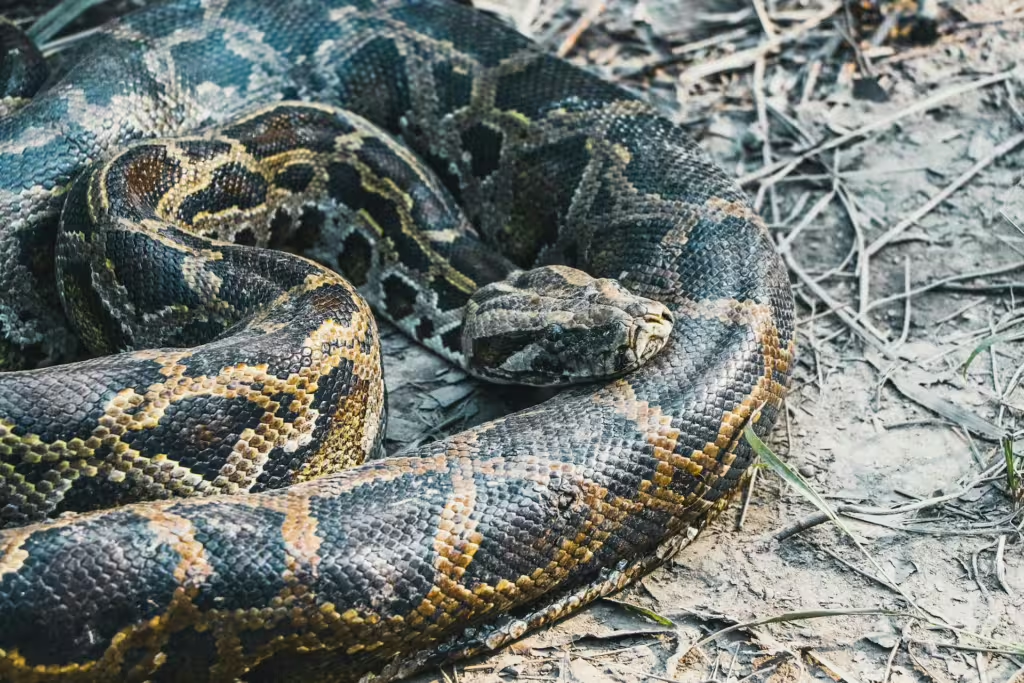
Gharials: Crocodilian Giants of the Indian Subcontinent
The gharial (Gavialis gangeticus) is a crocodilian unlike any other. This critically endangered reptile is found in the rivers of the Indian subcontinent and is characterized by its long, slender snout and sharp teeth. This particular adaptation means that the gharial is one of the most specialized reptiles in the world, but it also makes them more vulnerable. These crocodilians are entirely piscivorous, which means they feed primarily on fish.
Gharials were once widespread across the Indian subcontinent but have seen a dramatic decline in numbers due to habitat destruction, pollution, and the loss of their main prey. There are fewer than 250 individuals remaining in the wild as of the writing of this article, and so, the poor gharial is considered one of the most endangered crocodilians in the world.
Conservation efforts are in place, their main focuses being on protecting the remaining populations of gharials by establishing protected areas and breeding programs. Yet even with some progress being made, the gharial remains critically endangered. Without ongoing conservation efforts, the gharial will wind up extinct likely in the next century.
Iguanas: The Reptilian Giants of the Americas
Iguanas might be able to fit in a fish tank at the start, but these large, herbivorous lizards can grow up to 6 feet long and can weigh as much as 5 pounds. Iguanas are found all throughout Central and South America. They are primarily arboreal, spending much of their time in trees, where they feed on leaves, flowers, and fruit.
The green iguana actually plays a key role in tropical and subtropical ecosystems as both a herbivore and a prey species for predators such as birds of prey and snakes. Sadly, like so many other creatures, the iguana is becoming increasingly threatened by habitat loss, the illegal pet trade, and the introduction of non-native predators.
Habitat restoration, the establishment of protected areas, and the regulation of the pet trade are all conservative efforts helping to keep the population stable.
True Investigator Says…
As you can see, the world of giant reptiles is as fascinating as it is fragile. The reptiles represented above are links to our distant past, to humanity’s early days, and far beyond to the time of the dinosaurs. Today, they are an irreplaceable part of our natural world. However, the threats they face today are more significant than many of us think. Despite their hearty and adaptable natures, the long-term survival of these animals is not guaranteed; not without our help. By supporting conservation efforts and working to reduce the human impact on their habitats, we as individuals can help to ensure that future generations will be able to marvel at the giants of the reptile world just as our ancestors did…though with a bit more wonder than fear, we suspect.
Discover more from TrueInvestigator
Subscribe to get the latest posts sent to your email.
